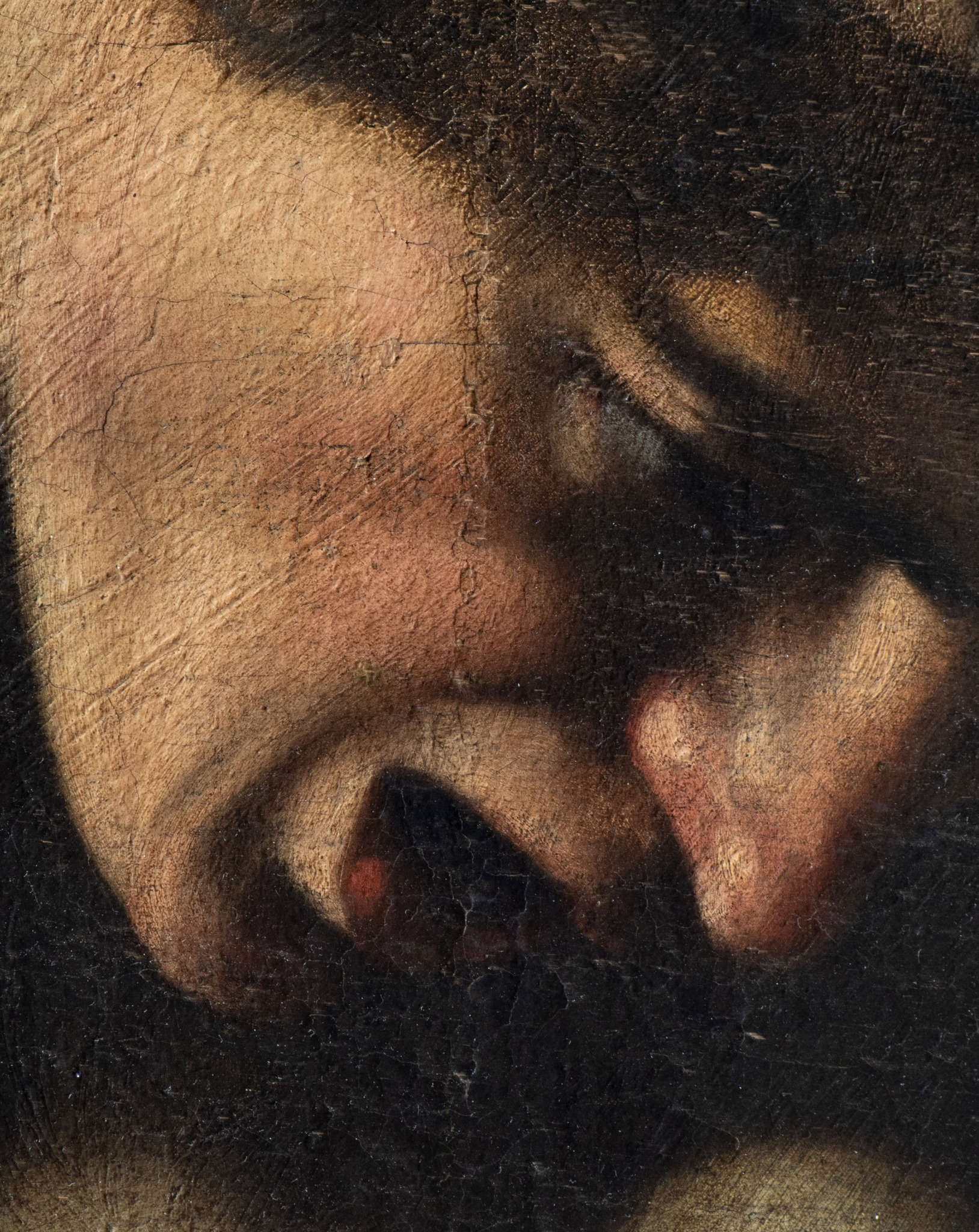Operations to monitor the state of conservation of the three famous Caravaggio canvases in the Contarelli Chapel inside the church of San Luigi dei Francesi in Rome have begun. TheCentral Institute for Restoration (ICR) in Rome announced this today through its social channels. The intervention, promoted and curated by the Central Institute for Restoration itself, represents a new chapter in the long and established history of attention and care that binds the institute to the masterpieces of the Lombard master.
These are the works depicting the Vocation of St. Matthew, the Martyrdom of St. Matthew and St. Matthew and the Angel, painted by Michelangelo Merisi between 1599 and 1602 to narrate through painting the life of the Evangelist. Three masterpieces that, with their revolutionary use of light, realism and dramatic composition, marked a turning point in the history of art and now, more than four centuries later, return to the center of careful maintenance.

The monitoring, part of the larger 10-year review program of historic restorations, aims at a thorough assessment of the state of conservation of the three canvases. The activities are coordinated in synergy with the Special Superintendence of Rome and the Pieux Établissements de la France à Rome et à Lorette, which manage the church of San Luigi dei Francesi.
The investigations are entrusted to the Canvas Paintings Laboratory of the Central Institute for Restoration, a facility of excellence in conservation and diagnostic practices. The ICR team has already begun a series of highly specialized technical operations, including detailed cataloguing of the works, visual analysis using a digital microscope, and systematic photographic documentation.

Traditional observation techniques are complemented by modern environmental diagnostic tools. These include monitoring the temperature andhumidity of the masonry, analyzing dust, and checking for pollutants and pathogens that could compromise the integrity of the canvases.Thermographic analysis is also carried out to detect any structural anomalies not visible to the naked eye.
A crucial part of the project also involves checking the efficiency of the linings performed by the ICR itself between 1965 and 1967. Those interventions represent a fundamental milestone in the history of Italian restoration, and their durability over time is now the focus of scientific reflection, as a parameter for assessing the effectiveness of the conservation techniques employed more than half a century ago.
The three works in the Contarelli Chapel constitute a unified cycle both iconographically and stylistically, designed to render through painting the power of faith and the drama of human existence. The Vocation of St. Matthew, with the famous light cutting through the scene from the right side, the Martyrdom of St. Matthew, immersed in a tragic and chaotic atmosphere, and St. Matthew and the Angel, in the final version in which the saint appears to be guided with vigor by the spirit, have now entered the collective imagination not only of scholars but also of visitors from all over the world.
In this context, the ICR’s intervention does not represent a restoration operation in the strict sense, but a work of verification, control and prevention, which is part of the broader mission of protecting the national artistic heritage. In fact, constant monitoring is one of the most effective tools for ensuring the survival of works of art over time, anticipating any critical issues and intervening in a timely manner.
The monitoring campaign on the Caravaggio canvases stands as an example of synergy between Italian and French institutions, cutting-edge technology and craftsmanship, historical knowledge and diagnostic expertise. The ICR, in this sense, consolidates its role as an international reference in the field of restoration and conservation.
The approach adopted in the Contarelli Chapel project is the fruit of decades of experience, research and methodological refinement. Every intervention, even the most minimal, is preceded by a thorough study phase, which considers not only the pictorial material, but also the environmental context, the support, the pre-existing materials and any structural or climatic changes that have occurred over time.
Unlike extraordinary restorations, which are often carried out in emergency situations, planned maintenance allows for regular and gentle intervention, prolonging the life of the works and minimizing the impact of conservation operations. This is the operational paradigm that the ICR has been pursuing for years and that finds in the Contarelli Chapel one of its most emblematic applications. The monitoring activity represents a fundamental levee: every piece of data collected during these phases contributes to building a valuable database, which guides future choices and allows intervention techniques to be adapted to the specific needs of each work.
Even in the absence of invasive interventions, ICR’s work is critical to ensuring that future generations can continue to admire these masterpieces. Heritage care is not an isolated act, but an ongoing process that thrives on attention, study and collaboration. And in this process, the “relationship,” if you can call it that, between the ICR and Caravaggio continues to write new, valuable pages.
 |
| Caravaggio, monitoring campaign begins on Contarelli Chapel masterpieces |
Warning: the translation into English of the original Italian article was created using automatic tools. We undertake to review all articles, but we do not guarantee the total absence of inaccuracies in the translation due to the program. You can find the original by clicking on the ITA button. If you find any mistake,please contact us.